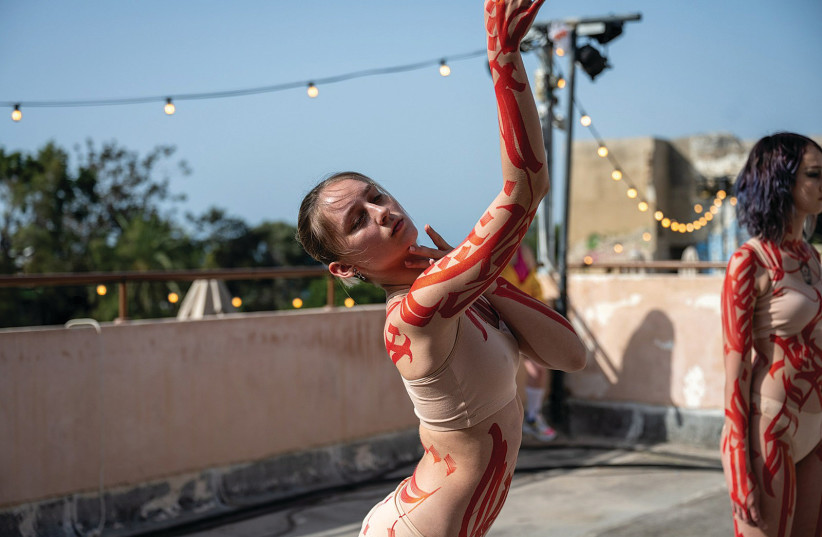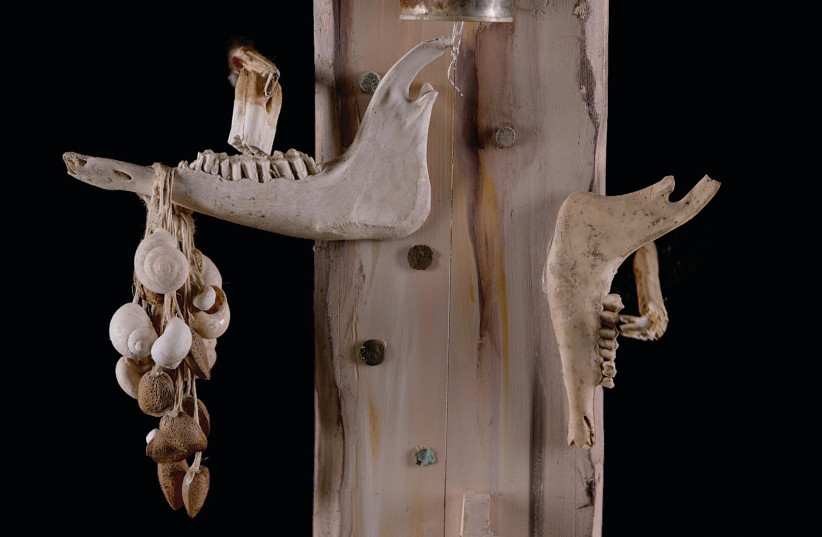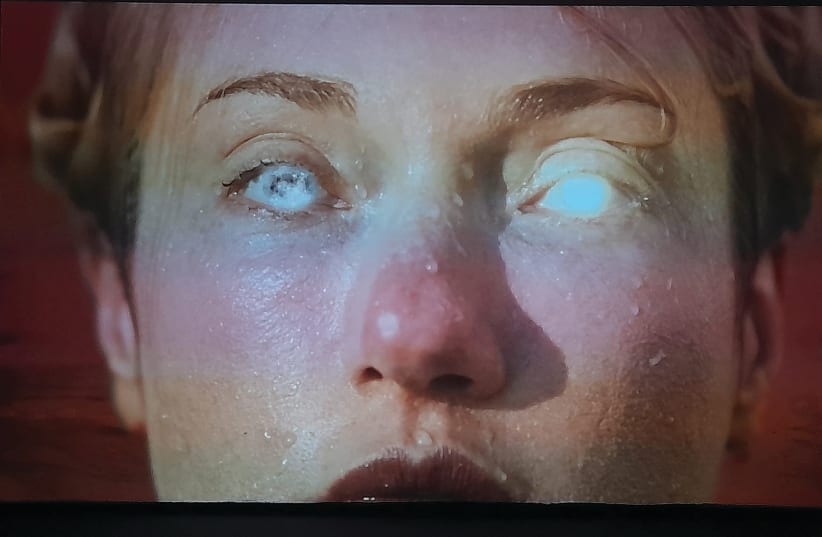TEL AVIV
SATURDAY, JUNE 3 – Watch the Tony Award-winning play Red about a key moment in the life of Jewish-American abstract painter Mark Rothko. Rothko (Ohad Shahar) had been asked to paint murals for the Four Seasons Restaurant in New York City in the late 1950s. He is aided in this task by a younger man (Yechiam Berko). Their relationship quickly escalates to a heated discussion about the meaning of color, seeing and art itself. Is red the color of wine and Santa Claus or is it the color of slit wrists and the Devil? In reality, Rothko decided against creating backdrops for wealthy diners and instead had the works shipped to the Tate, where they are shown today. This is the first time the play is performed here in Hebrew. Tmuna Theater. NIS 70 per ticket. 8 Shontzino Street, Tel Aviv. Phone (03) 561 1211 to book.
KIBBUTZ HAZOREA
Visit Kefitzat Haderech at the Wilfrid Israel Museum of Asian Art and Studies. Jointly curated by Shir Meller-Yamaguchi and Shlomit Breuer, this unique collection of highly personal works by four outstanding artists is a delight.
Generously supported by the Pais Art Greenhouse, the artists were able to expand on their existing oeuvre and deepen their research. Eden Auerbach Ofrat created a video artwork titled The Sun Also Rises. In it, a heroine goes on a quest that is partly alchemical and partly Star Wars inspired as she plunges into a magical pool to unite moon and sun. Eliav Leibovitz presents Hybrid (Savage) at the Asian art collection, a splendid reference to the dragon motifs used by Chinese ceramics masters in the past. He also presents The Lights of Tohu-Chaos which refers to Jewish mythology next to a remarkable video artwork from Ya’ara Zach. In The First Year, Zach uses breath and blue latex to offer a deep meditation on mourning and grief.

Shahd Zoubi presents Threshold, a glass artwork that refers to the talaat al aroos (the visage of the bride), a traditional song that is usually sung to a young woman before she departs the house of her father to be wed. The elaborate details refer to the predatory nature of existence, hinting at the violent potential of an arranged marriage, as well as to the Kalīla wa-Dimna fables.
In The Flower in My Garden artist Vered Nissim created a sculpture of her mother, who worked as a cleaner, and shaped for her a dress made from yellow plastic gloves used when handling cleaning liquids.
The work refers to an earlier video-art project in which she poured water on her mother from a garden hose sprayer while the mother spoke about the hardships of trading one’s life and strength to make ends meet. The pearls in the sprayer, as well as the lilies arranged on the floor, are a poetic expression of the love between the two women. Free admission.
ACRE
The cement boats crafted by Saher Miari told his family’s story, fishermen transported from Acre to al-Makr in the 1970s, for nearly two decades. The first boat was installed at Cabri Gallery in 2008, where it blocked the passage to the exhibition. New boats were created for site-specific exhibitions, like the Ghetto Fighters’ House Museum (2020). In it, the bottom was made of concrete to mark the longing for stability and a fixed dwelling. For the 2023 Zumu exhibition, where the boat returns to the site it left all these decades ago, the artist positioned Boat No. 6 facing the sea and left it incomplete.
Miari is one of the 70 artists included in this massive art event. Placed at the old Egged building, the theme of the exhibition is tourism and how it destroys the sites where it functions. Alona Rodeh presents a video art in which sand altars are built and destroyed. Hadassa Goldvicht depicted her everyday family life in the belly of a whale. Free admission. Shown until Saturday, July 1. 34 HaArbaa St. Learn more at https://zumu.org.il/
BEIT GUVRIN
Visit the national park and enjoy One Tongue, a combination of video art projected inside the bell caves and a sound-project that honors the deep past of this region. Artist Dor Zlekha Levy composed a musical work in the Proto-Semitic language. Sung by different performers at various points inside the caves, sounds blend together to shape a sum much larger than their parts.
The experience harks back to the pre-monotheistic times when humans entered caves to paint images, sleep, chant and dream.
Levy is not the first Israeli artist to show a musical interest in the deep past of the near east.
Composer Tsippi Fleischer, for example, created an opera sung entirely in Akkadian titled Adapa. Dina Yakerson and Zohar Shafir released a concept album last year about Inanna’s descent to the underworld based on the Sumerian myth. Yet, as nobody really knows how proto-Semitic was spoken, Levy’s work contains powerful elements of fantasy and redemption. It invites us to enter the situation described in Genesis 11:1 “Now the whole world had one language and a common speech.” This was humanity united in one tongue before humans began to differ and war with one another.
Guided 90-minute Hebrew language tours are offered on Thursday and Saturday only between 7 p.m. to 10 p.m. Preregistration is required via: https://www.parks.org.il/activity/taarucha/ . Admission is included in the entry ticket to the park (NIS 28 per adult). Shown until Saturday, November 11. To listen to the Sumerian-inspired Hebrew album visit: https://nicoteenthegoldenroom.bandcamp.com/album/ Opera lovers may watch Adapa on Fleischer’s Youtube channel.
ART NEWS
KAKDELART, a recently opened space serving mostly Russian-speaking artists, some of whom recently arrived here following the Russian invasion of Ukraine, offers a unique combination of performance space, artist’s studios and a community.

Photographer Evgenii Petrushanskii is a member. Recently, he presented a painful collection of black and white photographs he took in Indonesia at Luna Volta at Grosso Modo Artists Collective (31 Alfasi Street, Tel Aviv) at an exhibition curated by Dina Yakerson. Viewing these images, I was struck by one of a man who screamed in anguish. This seemed to be in conversation with British artist Francis Bacon’s Head VI.
“At this point,” founder Dasha Ilyashenko said, “many famous people who would normally be hard to reach [in Russia] are now available,” they are also here.
Located in a lovely Ottoman building, the group recently launched a fanzine titled Who Goes Down on Migdal Shalom? (designed by Adam Karev, who is known in the tattoo scene as Ink Boi). Performances include calligraphy events created by Vadim XE. While most artists speak Russian, one does not need to speak Russian in order to work there. Karev, for example, does not.
The brilliant photography of Leila Erdman Tabukashvili is also on display.
In her All About Youth series (http://leilaerdman.com/), Tabukashvili offers us the gift of a very clear, poetic image. While she seems to be partly inspired by Michal Chelbin, her own visions beckon us to solve their riddles in a different way.
Learn more about the artists included at RU-speaking Israeli artists (@kakdelart) on Instagram and other social media platforms. 30 Yefet Street, Jaffa.
BERLIN, THURSDAY, JUNE 8 – Curator Liav Mizrahi’s exhibition Who by Fire: On Israel opens at the German capital. Works by Durar Bacri, Fatma Shanan and Avner Pinchover are shown alongside works by Berlin-based Israeli artists like Ariel Reichman and Leon Kahne. Mizrahi curated the exhibition alongside the artistic director of Haus am Lützowplatz Dr. Marc Wellmann. Lützowpl. 9. See more at: https://www.hal-berlin.de .
Mizrahi’s exhibition, Charity Will Save from Death – The German Project will open at Salon Avital on the same day at 7 p.m. Am Spreebord 9b. Visit https://avitall.de/ to learn more.
Art Roundup is a monthly glance at some of the finest art exhibitions and events currently being shown across the country. Artists, curators and collectors are welcome to send pitches to hagay_hacohen@yahoo.com with “Art Roundup” in the email subject.












